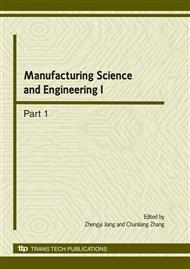p.374
p.378
p.382
p.386
p.390
p.395
p.400
p.404
p.408
Key Technologies in the Design of a Vacuum Die Casting Mould for Aluminum Alloy Joints
Abstract:
Aluminum alloy joints are a key component of a light-weight bus body, hence, they have a complicated structure and high strength requirement. A vacuum die casting mould has been developed and joints have been manufactured using a CAE simulation, a “whole-process-vacuum exhaust” vacuum die casting process and a decreased cross-section design for vacuum-pumping. The joint’s internal porosity has been noticeably reduced and its mechanical properties have been considerably improved in comparison with joints manufactured from die casting.
Info:
Periodical:
Pages:
390-394
Citation:
Online since:
March 2010
Authors:
Keywords:
Price:
Сopyright:
© 2010 Trans Tech Publications Ltd. All Rights Reserved
Share:
Citation:


